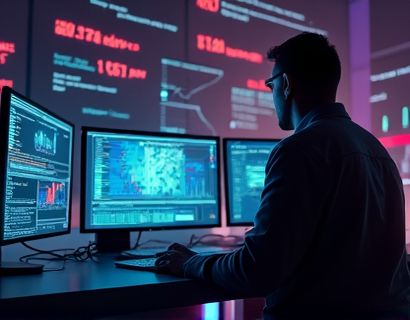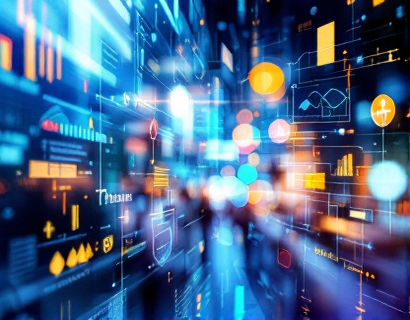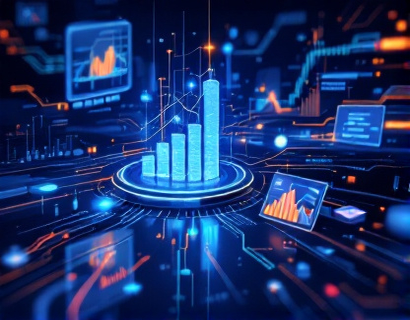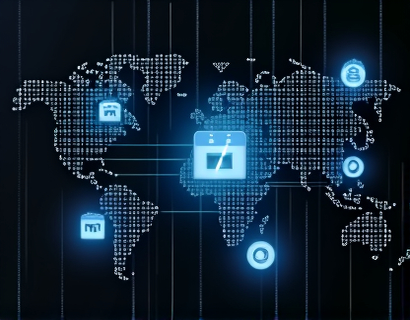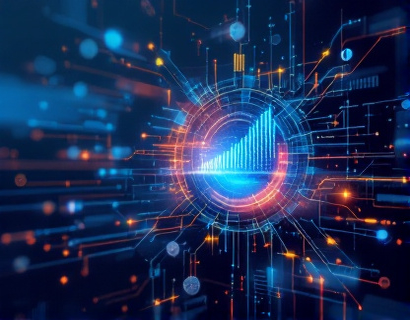Revolutionizing Real-World Asset Integration: Secure and Efficient Blockchain Tokenization Solutions
Blockchain technology is at the forefront of transforming traditional asset management by introducing innovative tokenization methods. This transformation enhances liquidity and market accessibility for real-world assets, integrating them securely and efficiently into the digital ecosystem. The core of this revolution lies in the ability to tokenize physical assets, thereby creating digital representations that can be traded, managed, and monitored with unprecedented transparency and security.
The concept of tokenization involves breaking down a real-world asset into smaller, tradable units represented by digital tokens on a blockchain. These tokens encapsulate the rights, claims, or interests in the underlying asset, allowing for fractional ownership and broader market participation. This approach not only democratizes access to high-value assets but also streamlines transactions, reduces costs, and minimizes the risk of fraud.
One of the primary advantages of blockchain-based tokenization is its ability to provide an immutable and transparent ledger of transactions. Each token's history, from creation to ownership changes, is recorded on the blockchain, ensuring that all stakeholders have access to the same information. This transparency builds trust among investors and asset holders, fostering a more reliable and efficient market environment.
The integration of real-world assets into the blockchain ecosystem is not without its challenges. One significant hurdle is the need for robust and scalable infrastructure to support the high volume of transactions and data processing required. Additionally, regulatory frameworks must evolve to accommodate the unique characteristics of tokenized assets, ensuring compliance and protecting investors.
Despite these challenges, the potential benefits are substantial. Tokenization can significantly enhance the liquidity of real-world assets, which are often illiquid due to their size, complexity, or lack of a secondary market. For instance, real estate, art, and infrastructure can be tokenized, allowing investors to buy, sell, and trade these assets in smaller, more manageable units. This increased liquidity attracts a broader range of investors, from individual retail investors to institutional funds, thereby expanding the market and driving efficiency.
Efficiency is another key benefit of blockchain tokenization. Traditional asset transactions often involve multiple intermediaries, such as brokers, lawyers, and banks, which add time and cost to the process. Blockchain technology automates and simplifies these transactions through smart contracts, which are self-executing contracts with the terms directly written into code. Smart contracts ensure that all conditions are met before the transaction is executed, reducing the need for intermediaries and speeding up the process.
The security offered by blockchain is unparalleled in the realm of asset management. The decentralized and cryptographic nature of blockchain makes it extremely difficult for malicious actors to alter or manipulate transaction data. Each transaction is verified by multiple nodes in the network, ensuring that once a transaction is recorded, it cannot be altered without consensus from the majority of the network. This level of security is crucial for asset holders and investors who require a trustworthy environment for their investments.
Moreover, tokenization can improve the management and tracking of assets. With blockchain, the entire lifecycle of an asset, from creation to disposal, can be recorded and monitored in real-time. This transparency helps in assessing the asset's value, compliance, and performance, providing valuable insights for decision-making. For example, in the case of infrastructure projects, tokenization can track the progress of construction, maintenance, and usage, ensuring that all parties are aligned and accountable.
The application of blockchain tokenization extends beyond traditional assets to include emerging areas such as renewable energy and carbon credits. Tokenizing these assets can facilitate the trading of environmental credits, promoting sustainable practices and incentivizing green investments. This not only aligns financial goals with environmental objectives but also opens new avenues for investors interested in impact investing.
To fully realize the potential of blockchain tokenization, it is essential to address the technical and regulatory challenges. Technologically, developing scalable and interoperable blockchain platforms is crucial to handle the high throughput required for asset tokenization. Interoperability ensures that different blockchain systems can communicate and transfer assets seamlessly, enhancing the overall ecosystem.
Regulatory frameworks must also adapt to the unique aspects of tokenized assets. Clear guidelines and standards need to be established to define the legal status of digital tokens, address tax implications, and ensure investor protection. Collaboration between regulators, industry stakeholders, and technologists is vital to create a balanced and supportive regulatory environment.
In the realm of asset management, the adoption of blockchain tokenization can lead to significant operational improvements. Asset managers can leverage tokenization to diversify their portfolios more effectively, manage risk more precisely, and offer innovative investment products to their clients. For instance, tokenized real estate investments can provide exposure to property markets that were previously inaccessible due to high entry costs or geographic limitations.
Furthermore, the use of blockchain in asset tokenization can enhance the efficiency of asset servicing and maintenance. Smart contracts can automate routine tasks such as payment collection, maintenance scheduling, and compliance reporting, freeing up resources for more strategic activities. This automation not only reduces operational costs but also minimizes human errors, ensuring smoother and more reliable asset management.
The financial industry stands to gain significantly from blockchain tokenization. Banks and financial institutions can use tokenized assets to create new financial instruments, such as tokenized bonds or equity shares, which can be traded more efficiently on digital platforms. This can lead to reduced transaction costs, faster settlement times, and increased market participation. Additionally, tokenization can facilitate cross-border transactions by eliminating the need for complex currency conversions and reducing the risk of fraud.
For individual investors, the democratization of asset ownership through tokenization means access to a wider range of investment opportunities. Smaller investors can now participate in markets that were once dominated by large institutional investors. This shift not only promotes financial inclusion but also fosters a more diverse and resilient market ecosystem.
However, the success of blockchain tokenization in asset management depends on widespread adoption and collaboration across industries. Technology providers, asset owners, financial institutions, and regulators must work together to develop standards, best practices, and innovative solutions. Education and awareness campaigns can also play a crucial role in helping stakeholders understand the benefits and potential of blockchain tokenization.
In conclusion, blockchain tokenization represents a transformative approach to real-world asset integration, offering secure, efficient, and transparent solutions. By addressing the technical and regulatory challenges, the asset management industry can harness the full potential of blockchain to enhance liquidity, efficiency, and market accessibility. As the technology matures and adoption grows, the future of asset management will be increasingly defined by the seamless integration of physical and digital worlds.








